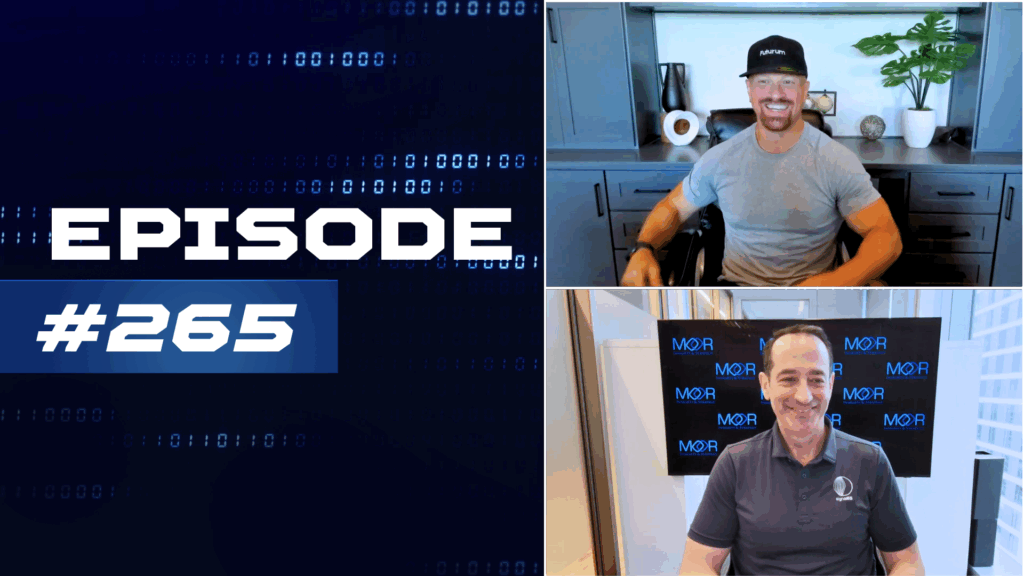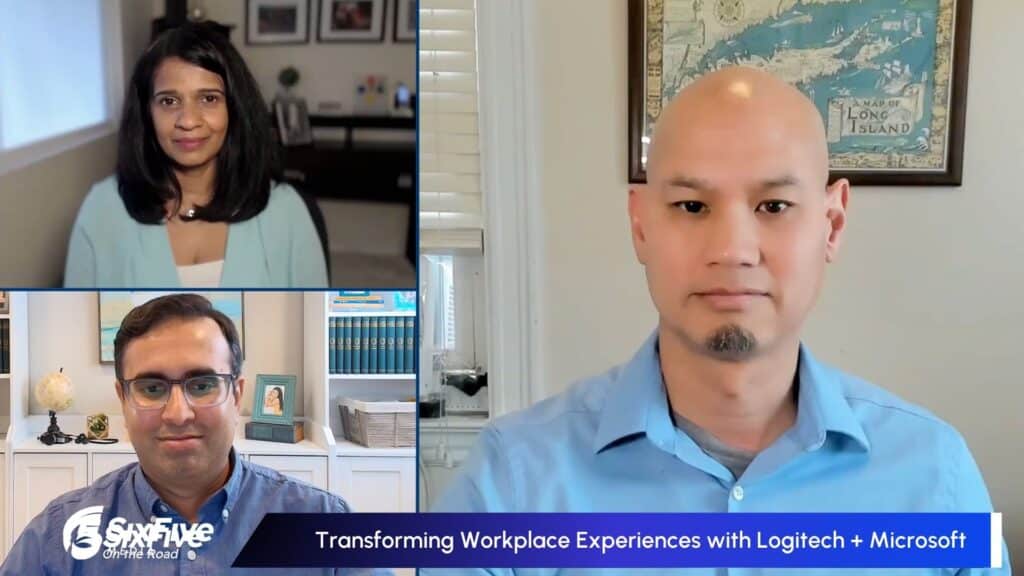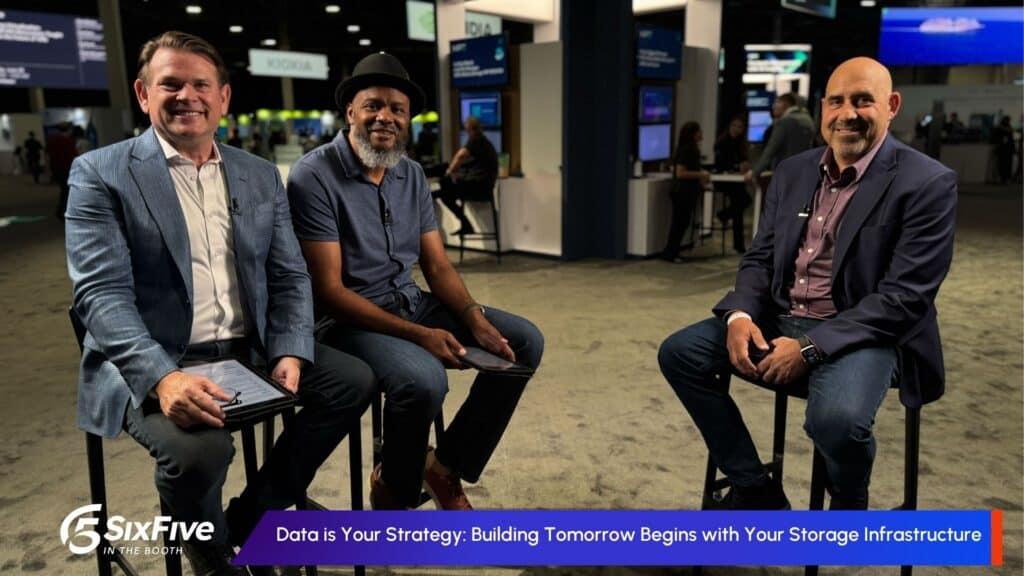On this episode of The Six Five – Insider Edition, hosts Daniel Newman and Patrick Moorhead welcome Broadcom’s Purnima Padmanabhan, VP & GM, Tanzu Division, for an inside look at how Tanzu furthers Broadcom’s hybrid cloud strategy, the next evolution of the Tanzu Application Platform, and more.
Their discussion covers:
- What makes Tanzu so valuable to customers, and how Broadcom will help accelerate the deployment of cloud-native applications going forward
- The recent announcement that VMware Tanzu and Aria will come together on a single track, and how customers will gain from this combination
- How Tanzu furthers VMware’s, and now Broadcom’s, hybrid cloud strategy
- How customers should be thinking about managing Kubernetes and how Tanzu for Kubernetes Operations helps support this
- The next evolution of the Tanzu Application Platform and what it offers for new and existing customers
Be sure to subscribe to The Six Five Webcast, so you never miss an episode.
You can watch the full video here:
Or Listen to the full audio here:
Disclaimer: The Six Five webcast is for information and entertainment purposes only. Over the course of this webcast, we may talk about companies that are publicly traded, and we may even reference that fact and their equity share price, but please do not take anything that we say as a recommendation about what you should do with your investment dollars. We are not investment advisors, and we ask that you do not treat us as such.
Transcript:
Patrick Moorhead: The Six Five is live at Broadcom headquarters here in San Jose, California. It is deal day between Broadcom and Vmware, super exciting day, an historic day and something that we’ve been tracking for about 18 months, Daniel.
Daniel Newman: It has, and is a big day. And I think we wondered, would we get here? And yet here we are and it is a historic moment. It’s a big moment. And Pat, we love large M and A. It creates so much excitement, so much buzz. And these are companies that do very different things. And there was a lot of questions and eyeballs on this deal and what does it mean? And being here at Broadcom headquarters on deal day gives us the chance to have some of those conversations.
Patrick Moorhead: It does, and maybe a few victory laps. I think in three months in it’s like, this deal is going to go through for the right reasons. We’ve seen deals go. We’ve seen deals not go. We knew this would go. And by the way, one of the thing that the experts may have gotten wrong here is, Hey, what was going to happen with Tanzu? Is it still going to be there? Is it not going to be there? Well, we have with us the Tanzu GM, Purnima. Great to see you.
Purnima Padmanabhan: It’s great to be here.
Patrick Moorhead: Welcome to the Six Five.
Purnima Padmanabhan: Thank you, good to be here.
Patrick Moorhead: Yeah.
Daniel Newman: It is great to be here. And Pat, you teed that up pretty nicely. There was a lot of wonderment we would call it, or curiosity about what would happen with Tanzu, what would be the multi-cloud and then the application strategy into the future. And let’s just start there. Talk a little bit about what’s going on with Tanzu. Where is it going and how does this deal potentially progress or speed its innovation?
Purnima Padmanabhan: Look, that has been a conversation I’ve had for the last 18 months. Is there going to be Tanzu going forward? And I think Hawk has unequivocally given the message to the market that Tanzu is not only there, it is very important and critical to Broadcom’s strategy. And that has just been great because I have probably another 50 calls lined up right now to make sure that everybody heard that message. And there is a reason behind it. When you think about what Hawk mentioned in his primary part of the strategy is to give to the industry the perfect, private cloud stack with VMware Cloud Foundation, a stack that can be deployed not only but on any public cloud. Now, once you have a beautiful private cloud stack, what do you put on it?
Patrick Moorhead: Apps.
Purnima Padmanabhan: Applications.
Patrick Moorhead: Surprise.
Purnima Padmanabhan: Surprise.
Patrick Moorhead: I knew this wasn’t a trick question. She was asking me something.
Daniel Newman: Good job.
Purnima Padmanabhan: It wasn’t a trick question.
Patrick Moorhead: One for Pat.
Purnima Padmanabhan: And the main point is you’re not just putting applications that have already been built as in Brownfield.
Patrick Moorhead: Right.
Purnima Padmanabhan: But you truly have to accelerate applications, new applications on that stack. And that’s where Tanzu fits in, truly helping customers accelerate their application innovation and application delivery and making it available on VCF based clouds as well as public clouds.
Patrick Moorhead: Yeah, through all of the Broadcom videos, everybody, if you’re watching, I’m obviously a fanboy of the hybrid multi-cloud and ways to make enterprises more efficient, speed up their operations, make them more secure. And having a common application platform, it does just make sense, particularly one that’s portable. At Explorer, we saw Tanzu and Aria come together, and that essentially means that you get the twofer. You get cloud management and you get a cross-cloud, multi-cloud application development environment. I’m curious, how did things change, if any, with the combination of the two companies? And maybe just if you can reinforce the benefit to enterprise of having those two combined would be great.
Purnima Padmanabhan: Of Tanzu and Aria combined.
Patrick Moorhead: Exactly.
Purnima Padmanabhan: Okay, so two different questions here it looks like.
Patrick Moorhead: I know.
Daniel Newman: We do that a lot.
Patrick Moorhead: We try to sneak that in there.
Purnima Padmanabhan: Multiple questions here. So let us start with the advantage of VMware and Broadcom. One thing that Hawk has already mentioned is that there is focus on VMware Cloud Foundation. And when we deliver this VMware Cloud Foundation, it’ll not only have the ability to run VMs, but it’ll also have the ability to run containers. So Kubernetes runtime becomes defacto. It’s already available in non-public clouds, AKS, EKS. And with any hybrid cloud or VMware based cloud, you will have Kubernetes runtime or Kubernetes dial tone as de facto. So what it allows then for us from a Tanzu perspective to do is we say that, “Look, we won’t worry about container run time. What we worry about is delivering an application run time. How can we give a platform that truly allows customers to accelerate their application delivery by helping them develop, operate, and optimize their applications more securely and faster?” It is a time to market advantage that we are talking about. Think about it, in an era where within a few days the fates of businesses can change.
Patrick Moorhead: Sure.
Purnima Padmanabhan: The ability to respond to that need is very critical. I’ll tell you some powerful examples With Tanzu. I have had customers when Covid struck, retail stores that had to close down. And within eight days they were able to put out an application for curbside pickup.
Patrick Moorhead: Great example.
Purnima Padmanabhan: That is direct benefit from a business perspective. And in order to do that, a Kubernetes run time is good, but what you need is that platform that allows you to rapidly develop, operate, and optimize the applications. So that is in core sense what is Tanzu. Now let’s go to Aria. What Aria did was twofold. One was basically management, management of the infrastructure, as well as management of the apps. So what we did is we took the management of infrastructure and combined it with VCF so that now you have one stack, fully virtualized, but with management. And then we took the management of applications and combined it with Tanzu. So now you have a singular platform, irrespective of where the application is deployed, private or public. And whether it is Kubernetes or not, you’re able to manage the applications. Because when you build applications, it’s a lot of times people talk about one-time delivery. But really, applications have to, once they’re delivered, you need to optimize them and you need to manage cost, performance and security of these applications, and that’s where it becomes a beautiful combination. And rather than have multiple brand names, we call all of it, Tanzu.
PatrickMoorhead: Understood. No, by the way, I think it’s the best explanation I’ve heard, and I know it’s taken a lot of education even post Explorer.
Purnima Padmanabhan: Yes, it has indeed.
PatrickMoorhead: To get that across. So I’m really glad that you brought that up again, and it makes perfect sense to me. Even though I know some people like disaggregated, then they want aggregated for simplicity, but they want … I get it now, thank you.
Purnima Padmanabhan: Great.
Daniel Newman: Yeah, it’s always good when you know the question’s been nailed and in real time when you walk away you’re like, “That makes a lot of sense.”
PatrickMoorhead: It does.
Purnima Padmanabhan: Thank you.
Daniel Newman: So I want to talk a little bit about advancing the hybrid cloud strategies and jointly. Now of course, it’s one very large entity now. There’s already two very large entities before, but the hybrid cloud strategy. And I think the one thing we’ve come to the conclusion is that every enterprise is going to land hybrid in some way.
Purnima Padmanabhan: Yes.
Daniel Newman: Now again, we sometimes see the conflation of hybrids and multis and different words, and Tanzu is at the epicenter of this conflation of trying to help companies deal with it all. But how do you see Tanzu as an accelerator of Broadcom’s vision for hybrid cloud strategy?
Purnima Padmanabhan: And so maybe we’ll just re-trade the definitions a little bit. When it comes to hybrid, the idea is that you have workloads that can be deployed on prem, but they can also be moved or ported across to multiple environments, and that’s the hybridity part including public clouds. And VMware Cloud Foundation truly allows you to do that. And Tanzu is the first class citizen on top of VMware Cloud Foundation. So if you have VMware Cloud Foundation, then your ability to build applications and deliver to that cloud foundation becomes extremely easy. And by that, you also are able to get your applications anywhere. But then there is also multi-cloud. And usually multi-cloud, the way we define it is in pockets of cloud. And you may not have a common runtime, but you may have, for example if I’m deployed on AWS, I may be using AKS for my Kubernetes. I may be using AKS on Azure, I may be using our Tanzu Kubernetes runtime on VCF. How do you then get portability? And that is the other layer of portability that Tanzu brings in. You build your applications once against a Kubernetes dial tone, but then you manage it at scale across any of these environments. So Tanzu supports both, as you said at the nexus, both the hybrid cloud as well as expands to the true multi-cloud strategy.
Patrick Moorhead: By the way, I love the Kubernetes dial tone. I might start using that from now on. I’ll give you credit every once in a while for it.
Purnima Padmanabhan: Okay, that’s great.
Patrick Moorhead: It just makes sense. It is the common language for application containers, and it is the dial tone. Imagine that. I love that.
Daniel Newman: But Pat, you’re only talking to Gen X and Boomer then. Because I don’t think that young ones know what a dial tone is.
Patrick Moorhead: Good, good, good call, Dan, thank you.
Purnima Padmanabhan: That’s good.
Daniel Newman: Sorry everyone.
Patrick Moorhead: So simplicity and scale has really been a hallmark not only of Broadcom and software and even quite frankly a lot of Broadcom hardware, but also for Vmware. And whether it’s VMware Cloud Foundation or Tanzu, I think it’s also one of the rallying cries as well. I’d like to talk a little bit about the operations layer of this inside of Tanzu. Can you do the double click on that and talk about the value that this is bringing as well, and how is this, this is a question I get, how is this different from Aria?
Purnima Padmanabhan: Yeah, but as we said again, Aria application management and Tanzu have come together under one, so there isn’t any difference anymore going forward. So when I said, what is the purpose of Tanzu? It is to help customers develop, operate, and optimize. And develop is usually what we call through golden paths to production, so that each team doesn’t think about how do I get my application to production in a different way? You are systematizing that. With operate and optimize, what you have to do is you have to create that common management foundation for applications. And what we have done is think of it in terms of layers. The first layer is how can I provide the ability to manage policies, manage security, control the environment, manage the costs of my multi-cloud environment as well as all these Kubernetes that’s out there. That is very critical, but it doesn’t stop there. I think industry has just spent too much time talking just about Kubernetes policies really to manage application. The next thing that we do with operations is, what do you care If you’re an application developer? You don’t care what is the Kubernetes policy, but you do care what is your scale out policy. You care if your microservices have mutual author. You care if you can have PII data filtering turned on. So imagine rather than trying to talk about lower level policies, with Tanzu’s operate and optimize components, you can just give the higher level information that you need and then we translate it using that operations layer and make it so.
Patrick Moorhead: Just so I understand, this is on-prem. This is in multiple public clouds.
Purnima Padmanabhan: Yes.
Patrick Moorhead: Could be in on the edge possibly in a cloud, all with the same develop management, operate, optimize across that.
Purnima Padmanabhan: Yes, that is correct.
Patrick Moorhead: Sounds pretty good, Dan.
Daniel Newman: Roadmap time.
Purnima Padmanabhan: Yes.
Daniel Newman: So we, generally as analysts, it’s our gig to try to figure out where this is all heading. What I like even better is when someone just tells us. Now oftentimes these kinds of conversations come with a lot of caveats or asterisks. You’re not going to tell us everywhere that this is going to go. But I do think now that this deal is done, the focus is back on building the business back. It should never have not been, but sometimes it feels like it is. Where does the Tanzu platform go from here? Where do you see in terms of its innovation and how it will not only benefit the customer today like we talked about, but how is it going to benefit the customers in the future?
Purnima Padmanabhan: Yeah, I mean, if you look at today’s world, definitely software is still the lifeblood of all companies. And having that out with high resiliency, high security is the difference between let us say business success or not. It is dramatic as that. So I’ll start with the portfolio. One of the things I must, I guess take the blame itself, we did do was confuse the market with a lot of names. We have had a lot of names in the market. We have also had Aria and Tanzu.
Patrick Moorhead: I had a cheat sheet. I did.
Purnima Padmanabhan: You have to have the T Star cheat sheet.
Patrick Moorhead: I had that.
Purnima Padmanabhan: Is what I call that.
Patrick Moorhead: Yes.
Purnima Padmanabhan: So one is, we have simplified. Really rather than worry about naming and asking you to think about each and every component, at the core of the Tanzu business and Tanzu division is the Tanzu platform, application platform. And we have two approaches. One is a fully black boxed approach that is seamless and has been deployed at high scale with customers called Tanzu Application Service. Comes from the Pivotal heritage. The second one, we know people also want Kubernetes based application platform. And that is where our TAP or Tanzu Application Platform fits in. Now, rather than think of these as two separate things or migrating from one to the other, we are going to invest in both of them and give customers choice. Really TAS is think about more of like a Tanzu run type of model. Everything is black boxed and you’re just throwing in an application at it and we take care of the rest. But for customers that want to build grounds up a Kubernetes based stack, you also have TAP. So you have two alternatives with a core platform. That is all, Tanzu Application Service and Tanzu Application Platform.
But of course, you can’t build an application as an island. And you brought this up earlier and you brought this up earlier. You need to think about data and data services. And that is why we surround the Tanzu Application Platform with something called Tanzu Data that allows you to bring data services, but allows you to also attach your existing databases, your Brownfield environments into the application platform. Very critical. And the other piece is an application once it’s deployed has to be managed. And that’s where we bring Tanzu Intelligence that’ll help you manage cost, performance, and security. So if you remember those three things, there’s a core application platform, there is data and there is intelligence. That is the whole Tanzu portfolio that we are doing. But to make this happen, there’s a lot of innovation that has to happen. These can’t be now disparate products and they say, Okay, we throw it over the wall and ask customers to go and integrate it. So we are spending a lot of time now, this is not a new product, it’s just the glue fabric called the Hub, Tanzu Hub that allows us to stitch customers information about customers’ environment, their applications, the topologies, the dependencies.
And then we are putting on top of it’s going to be out now. We announced it at Explore, a gen AI based assistant on top because application data is hard to understand. I might have metrics, I have logs, I have traces, I’ve got cost information. But I don’t care about that individual points of data. I want to know is my application performing well and if not, what should I do? So being able to have that conversation and because we have structured data about the environment, we can do that. So you’ll see a lot more with that Tanzu Intelligent Assist, which is a gen AI based interfaceYou’ll also see us, again, provide more holistic integrated solutions. That is the second piece. And the third one is seamless integration with VCF. Once VCF is laid down, your ability to say do a Tanzu based development environment that truly gives that beautiful developer experience, that ability to build applications within days, not weeks or months. We want to make it available at everybody’s fingertips. So that’s where we are going.
Daniel Newman: Purnima, that was a very succinct description, I have to say.
Patrick Moorhead: In threes, I love everything in threes.
Purnima Padmanabhan: Everything is three, yes.
Daniel Newman: She’s got some hosting skills. I’m just saying if when you’re done building this into multiple billions, we’ll have her back.
Patrick Moorhead: I know, for sure.
Daniel Newman: You were very sharp on the answers, and I appreciate that.
Purnima Padmanabhan: Thank you.
Daniel Newman: Purnima, let’s make sure that we get back together here. Because in about six to 12 months, I think a lot of the market are going to want to see how these vision statements are coming to fruition and how tying the Tanzu portfolio into something that’s much more easy to digest starts to generate growth. And we start to hear from the customers that, Yes, this is working. Because what I’m hearing sounds like you are absolutely on the right path. Thanks so much for joining us today.
Purnima Padmanabhan: Thank you.
Patrick Moorhead: Thanks.
Daniel Newman: It’s deal day, and we’re here in San Jose at Broadcom headquarters. We’re seeing Broadcom and VMware officially together going forward. Patrick and myself have had the chance to talk to the leaders of the new Broadcom, VMware venture. And Pat, it’s been a lot of fun. But for everyone out there, I hope you hit that subscribe and join and watch all the episodes from today’s deal day coverage. But we got to go. More to come soon. Bye-Bye now.
Author Information
Daniel is the CEO of The Futurum Group. Living his life at the intersection of people and technology, Daniel works with the world’s largest technology brands exploring Digital Transformation and how it is influencing the enterprise.
From the leading edge of AI to global technology policy, Daniel makes the connections between business, people and tech that are required for companies to benefit most from their technology investments. Daniel is a top 5 globally ranked industry analyst and his ideas are regularly cited or shared in television appearances by CNBC, Bloomberg, Wall Street Journal and hundreds of other sites around the world.
A 7x Best-Selling Author including his most recent book “Human/Machine.” Daniel is also a Forbes and MarketWatch (Dow Jones) contributor.
An MBA and Former Graduate Adjunct Faculty, Daniel is an Austin Texas transplant after 40 years in Chicago. His speaking takes him around the world each year as he shares his vision of the role technology will play in our future.










